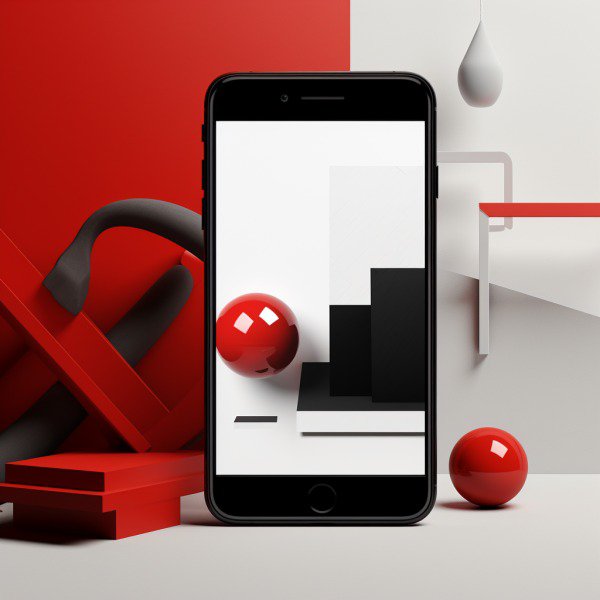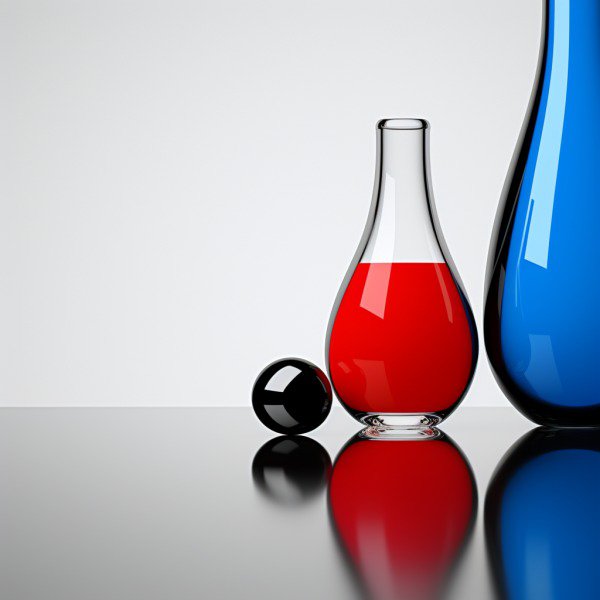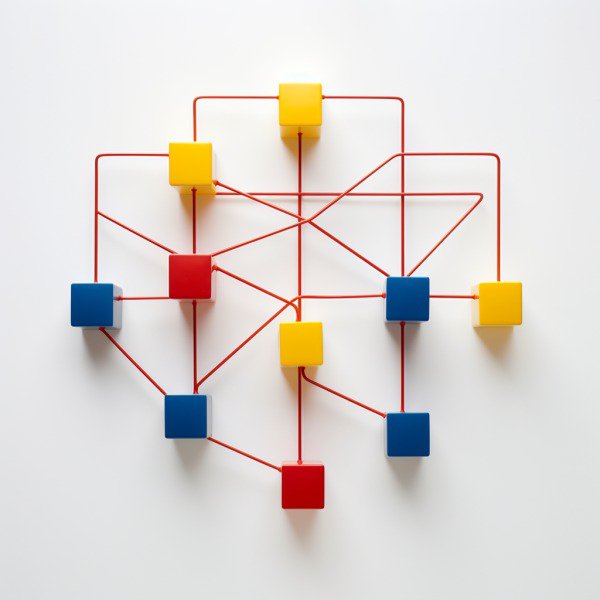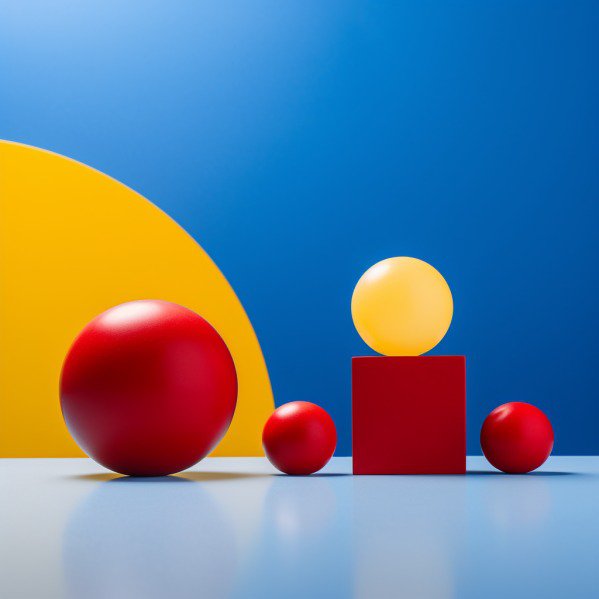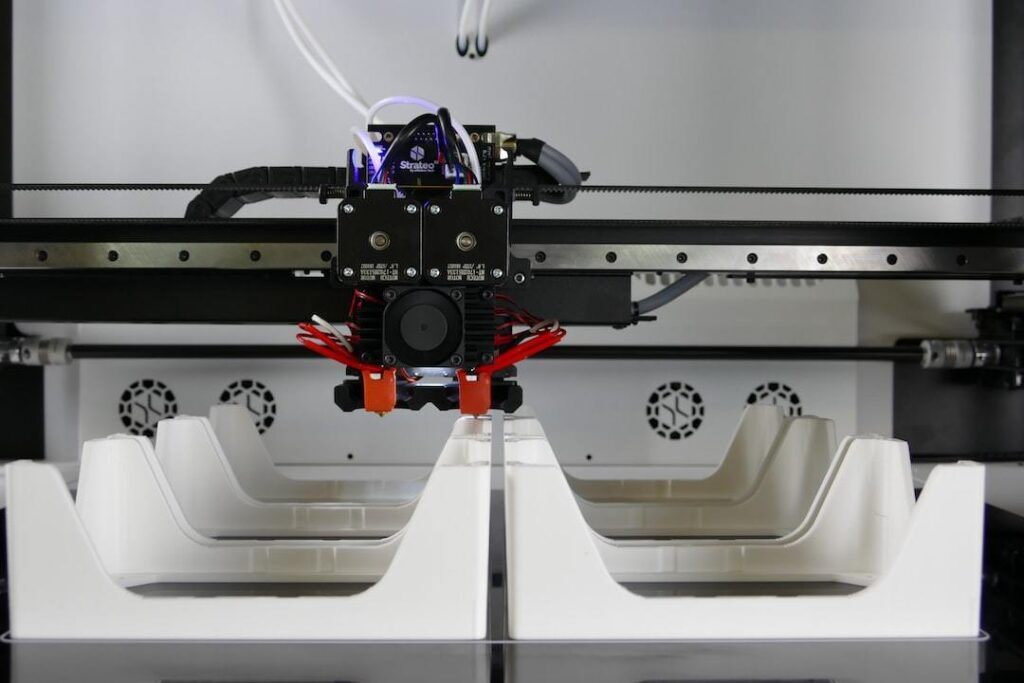Ever looked at your smartphone and marveled at the ease with which you navigate your favorite apps? That’s the magic of a well-designed apps interface. It’s like stepping into a familiar room where everything is just within arm’s reach, inviting yet efficient. The art of a successful app interface lies in its subtlety, creating an experience that is so intuitive it goes unnoticed.

But what if I told you there was more to this digital sorcery than meets the eye?
This post will pull back the curtain on how designers conjure up these seamless experiences. We’ll delve into design principles used by household names like Intercom and Figma or apps interface. You’ll learn about user-centric features that make Toggl’s onboarding process a breeze or Asana’s task management fun! And we’ll also shine light upon why Headspace puts such emphasis on accessibility options for inclusivity.
Table of Contents:
- The Art of App Interface Design
- Enhancing User Experience through Effective Onboarding
- Inclusivity in App Interface Design
- Making Your App Stand Out Through Inclusive Design
- Engaging Users through Fun Elements
- Strategic Placement of CTA Buttons
- FAQs in Relation to Apps Interface
- Conclusion
The Art of App Interface Design
When it comes to designing an effective mobile app interface, a good UI/UX design can make all the difference. By implementing key concepts and adding features that have proved successful, you can create an application with a powerful impact on users and apps interface.
Intercom’s Complex Menu Organization
A prime example of this is Intercom’s complex menu system. Renowned for its organization and clean look-and-feel, Intercom’s navigation structure provides users with easy access to key features without overwhelming them with too much information at once.
Their well-structured menus serve as a practical guidepost for designers aiming to create functional yet aesthetically pleasing interfaces. This approach not only keeps users’ attention but also makes their time searching within the app more efficient – another testament to how thoughtful interface design helps user interactions.
Figma’s Landing Page Typography
Moving beyond just functionality, consider aesthetics: One needn’t look further than Figma’s landing page typography . Filled with eye-catching designs that showcase real use cases, Figma demonstrates how captivating visuals paired with informative content capture audiences effectively. The clever mix of colors highlights important aspects while maintaining visual hierarchy—a principle crucial in good UI design.
Incorporating such distinctive visual elements into your own work could mean having your app stand out amidst household names – now who wouldn’t want that?
Prioritizing User Experience (UX)
- Simplicity: A cluttered screen confuses users; keep things simple by using white space intelligently and focusing on one primary action per screen.
- Consistency: Maintain the same visual and functional design throughout your app to avoid confusing users. Consistent designs make apps easier to use because they create a natural environment for users, enhancing their experience.
- User feedback: Make sure to give some sort of response when a user does something on your app. It could be something as straightforward as altering the appearance of a button or providing an animation when an action is taken and apps interface.
Key Thought:
Designing a killer app interface is all about blending form and function. Learn from Intercom’s menu organization to keep things neat, take cues from Figma’s eye-catching typography for visual appeal, and remember – prioritize user experience. Keep it simple, consistent, and responsive.
Enhancing User Experience through Effective Onboarding
The first interaction a user has with an app often sets the tone for their overall experience. A simple and intuitive onboarding process, like that of Toggl, can be instrumental in engaging users from the get-go for apps interface.
Toggl’s Onboarding Flow
Toggl is a time-tracking tool loved by many professionals. The beauty of Toggl’s product lies not just in its core functionality but also in its effective onboarding process.
As soon as you open the Toggl app, it guides you through short tours explaining key features. It uses clear language to explain how to start tracking your time or create new projects – essential tasks for using this productivity tool effectively.
What makes Toggl’s approach unique is that while it provides guidance, it does not force information onto users. At any point during these tutorials, there’s always an option to skip and explore independently. This level of flexibility caters to both types of learners: those who prefer guided instructions and those who learn best by doing.
In addition, their interface design manages simplicity without sacrificing function – making navigation effortless even for novice tech-users. Such thoughtfulness enhances usability which contributes positively towards user experience (UX) apps interface.
Clean layout: A clean layout means less clutter; every element serves a purpose enhancing UX right from the login screen down to setting preferences within the application interface.
User-friendly elements: User-friendly elements such as buttons are big enough with high color contrast ensuring visibility thus reducing effort needed when interacting with them.
Prominent Search bar: A prominent search bar lets users quickly find what they need without wasting time searching through menus. It’s evident that Toggl’s interface design works to prioritize user convenience. A well-planned and executed onboarding process, coupled with a thoughtfully designed app user interface can help in not just retaining users but also turning them into advocates for your product.
Key Thought:
Toggl’s successful onboarding process pairs a clean, user-friendly interface with flexible learning options. This thoughtful design caters to all types of users and prioritizes convenience – setting the tone for an engaging experience from the first apps interface. The key? Make sure your app helps users quickly understand its core features without feeling overwhelmed.
Inclusivity in Apps Interface Design
App interface design is more than just about aesthetics and functionality. Ensuring everyone, regardless of their abilities or disabilities, can interact with the app seamlessly is a key element of designing for inclusivity.
Headspace’s Accessibility Menu
The popular meditation app Headspace is a great example of designing for accessibility and inclusivity. Headspace’s user interface is designed to make it straightforward for people to explore its vast selection of guided meditations.
A key feature Headspace offers is an accessible menu which helps users with different needs access content suitable for them. This not only enhances the overall user experience but underlines the importance of designing interfaces keeping all types of users in mind.
This doesn’t mean compromising on good apps interface principles either. The Headspace app still maintains a distinctive visual hierarchy, using colors to highlight important elements without overloading the senses.
Simplicity plays a big role too – clean lines, white space, clear typography make sure nothing distracts from what really matters: finding peace amidst chaos. And while they may seem small details compared to broader aspects like usability or function – believe me when I say these little things matter greatly when creating engaging experiences that resonate with your target audience.
Making Your apps interface Stand Out Through Inclusive Design
- Data Visualization: A visually pleasing layout aids understanding; making data visualization crucial within an application’s UI/UX design process.
- Voice Commands: Incorporating voice commands provides ease-of-use for those who find manual interaction challenging.
- Create Consistency: Regularity across an application’s design elements helps users interact with the app without having to spend too much time searching for what they need.
Consider Google Maps, a go-to app for many. It’s crafted with everyone in mind – visual folks who love maps, people leaning on voice commands, and even those needing bigger text or contrasting colors due to vision issues.
Key Thought:
Designing an apps interface goes beyond aesthetics. It’s about crafting a user-friendly experience that everyone can navigate, just like Headspace does with its inclusive menu. Pay attention to the small stuff – color schemes, neat lines, and legible typography are key in engaging users. Incorporate data visualization and voice commands for added usability.
Utilizing Templates and Galleries in Apps Interface Design
The art of designing an engaging app interface often comes with its own set of challenges. From the initial brainstorming to sketching out design ideas, it’s a process that requires creativity and strategic thinking. One proven strategy for streamlining this creative journey is through the use of templates and galleries.
Typeform’s Template Gallery
Typeform, known for its intuitive forms and surveys, has carved a niche by leveraging pre-designed templates within its platform. These ready-to-use designs significantly reduce the mental effort required to create engaging content, thus making tasks easy.
In Typeform’s template gallery, you’ll find options designed specifically for different scenarios – from simple onboarding processes to detailed feedback forms – each built with key features aimed at capturing users’ attention. The color contrast used in these templates highlights important elements while white space ensures visual hierarchy is maintained.
This approach not only simplifies your work but also provides design inspiration when you need it most. Let’s delve deeper into how using such tools can help boost efficiency while still allowing customization as per your target audience’s needs.
Simplifying Complex Tasks
A well-crafted template helps break down complex tasks into manageable steps. It allows developers to focus more on fine-tuning specific details rather than spending time searching for ways to structure data visualization or implement voice commands effectively within their apps.
Maintaining Consistency
Using standardized layouts across various pages helps user experience (UX) remain consistent throughout the application interface – reducing cognitive load on end-users as they navigate around your mobile app interface seamlessly because everything looks familiar.
Quick Prototyping & Iterations
Templates allow for quick prototyping, which is essential in the design process. This way, you can rapidly test different designs and get feedback faster – saving precious time that would otherwise be spent on building everything from scratch.
Inspiring Creativity
Templates might kick things off, but they don’t put a lid on your creativity. Instead, they often spark some great ideas.
Key Thought:
Templates and galleries are your secret weapon in app interface design. They make complex tasks manageable, keep the user experience consistent, speed up prototyping, and can even spark new ideas. Tools like Typeform’s template gallery let you tailor engaging content to different scenarios while reducing mental effort.
Engaging Users through Fun Elements
When it comes to engaging users, one strategy stands out: incorporating fun elements into your app interface. Just like a sprinkle of spices can enhance the flavor of a dish, adding delightful details can significantly improve user experience and engagement.
Asana’s Celebration Creatures
The project management tool Asana, for instance, takes this idea quite literally with their celebration creatures. After you complete a task on Asana, small animated creatures pop up at the corner of your screen to celebrate your success. This unexpected reward injects joy into an otherwise mundane activity – ticking off tasks.
A seemingly simple feature such as this actually serves multiple purposes in enhancing user experience. First off, these celebratory animations create positive reinforcement that motivates users to complete more tasks – who doesn’t want another dose of digital confetti?
Beyond just creating feel-good moments though, they also give Asana its distinctive visual identity amongst countless other productivity apps out there. It’s no surprise then that Asana’s celebration creatures are often mentioned by users as something they look forward to while using the platform.
Making Tasks Fun Again
This creative design choice does not merely make Asana stand out but is backed by sound psychology principles too. Positive reinforcement has been shown time and again to encourage repeat behavior – in this case getting things done.
- Adds novelty and breaks monotony which makes for good UI design.
- Incorporating game-like elements or ‘gamification’ keeps people engaged longer than usual.
- Fosters emotional connection between user and product making them come back for more. The incorporation of amusing components may appear inconsequential initially, however they are essential for enhancing user experience and developing brand loyalty.
Colorful Icons – A Celebration of Success.
Those vibrant, colorful icons you see – the ones that showcase Asana’s celebration creatures? They’re not just for show. Besides jazzing up the app interface design, they keep things consistent and underline its unique visual flair. You’ll notice them every time you use the app.
Key Thought:
Injecting fun into your app interface can do wonders for user engagement. Take Asana’s ‘celebration creatures’ – they add a dash of delight, motivate users with positive reinforcement, and set the app apart visually. Plus, vibrant icons aren’t just eye-candy; they help maintain consistency while showcasing Asana’s unique flair.
Strategic Placement of CTA Buttons
The call-to-action (CTA) button is the pulse of your app interface. It’s like a spotlight on stage, drawing users’ attention to what matters most.
In our exploration, we’re focusing on how Buffer nails this crucial element in their design process. They don’t just throw a ‘Buy Now.’ tag anywhere and hope for the best. No siree. Instead, they strategically place it while highlighting why you should hit that button – hint: it has something to do with their premium plan.
Buffer’s Upgrade Prompt
Now let’s talk about Buffer’s upgrade prompt. Like any good salesperson worth their salt knows, it’s not enough to simply ask for an upgrade; you need to make sure customers understand what extra value they’ll get when they decide to level up from free use. (Buffer)
You see, Buffers doesn’t just place its CTA button at random places; rather it plays out like a well-directed movie scene where every prop adds meaning and drives home the message further more clearly than words could ever express.
This approach helps user interaction immensely as customers are not left fumbling around trying figure out where the next click or tap should go but instead feel guided towards the desired action which is a great example of mobile application UI/UX design done right.
In essence, the strategy behind placement isn’t much different than arranging furniture in your living room. You want everything within reach, yet nothing feels cluttered or hard to find. This balance is important in achieving key principles of successful interface designs.
Here, some ways strategic placement can be achieved:
- Making sure there’s clear visual hierarchy so users know exactly where to look first. This often involves playing with colors to highlight CTAs.
- Keeping enough white space around buttons, so they stand out.
- Making sure CTAs are easily accessible and don’t require too much time searching. For instance, you wouldn’t want to put the ‘search bar’ button in a hidden menu that requires multiple clicks to access.
When it comes to Buffer, their call-to-action for the premium plan isn’t quite there yet.
Key Thought:
CTA buttons are the pulse of your app interface, guiding users towards desired actions. Take a cue from Buffer’s strategy: don’t randomly place ‘Buy Now’ tags; instead, strategically highlight why hitting that button benefits users. Remember to ensure a clear visual hierarchy and keep enough white space around buttons for them to stand out.
FAQs in Relation to Apps Interface
What is an apps interface?
An app interface is the visual layout and interactive elements of an application. It’s what users interact with when using your app.
What is an example of an apps interface?
A good example would be Instagram’s user-friendly design that allows easy navigation through photos, stories, messages, and profiles.
Why is the apps interface important?
The right kind of UI/UX can make or break a user’s experience on your platform. An intuitive, visually pleasing design keeps users engaged longer.
How should an apps interface be?
An effective one needs to be clean, intuitive, consistent in style and theme across all pages. It should also offer smooth transitions between tasks for seamless usage.
Conclusion
Apps interface design is an art and a science. It’s about creating a digital environment that feels natural, inviting, and efficient.
You’ve seen how household names like Intercom make complex menus feel intuitive. And how Figma uses typography to draw attention.
Toggl has shown us the power of simple onboarding processes while Headspace emphasizes inclusivity in their app interfaces. Remember Typeform’s template gallery for efficiency? That’s a great idea too!
Asana’s celebration creatures prove fun elements can enhance user engagement as well! And let’s not forget Buffer – they show us the importance of strategic CTA placement.
The bottom line: Good apps interface design puts users first, considers every detail, makes tasks easy and creates consistency across different features for seamless navigation.
